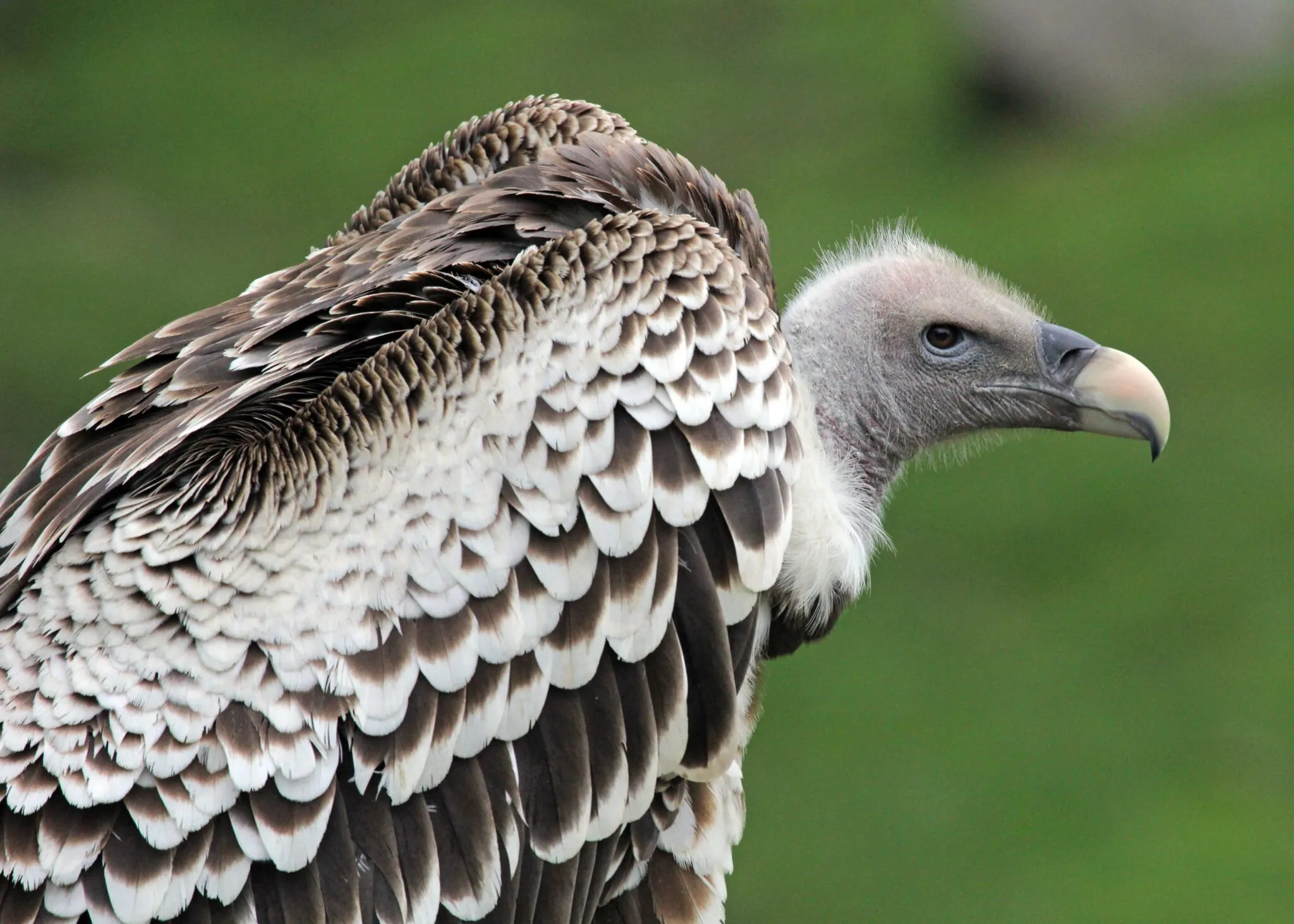-
Menu
- Plan Your Visit
- Meet The Animals
- Check Out Events
- Memberships
- About The Zoo
- Support the Zoo
- Conservation
- Education
- Groups & Private Events
- Zoo News
- Contact
- Indianapolis Prize
- Global Center for Species Survival
- Schedule
- Donate
- Membership
- Tickets

- Plan Your Visit
- Meet The Animals
- Check Out Events
- Memberships
- About The Zoo
- Support the Zoo
- Conservation
- Education
- Groups & Private Events
- Zoo News
- Contact
- Indianapolis Prize
- Global Center for Species Survival

Rüppell’s Griffon Vulture
Gyps rueppelli
About
These birds are built to fly! Rüppell’s griffon vultures are the highest-flying bird ever recorded, soaring up to 36,000 feet, or 7 miles high—the same as an airplane on a trip across the country! With a wingspan of up to 8 feet wide, vultures glide upward using thermal drafts in the atmosphere, so they rarely flap their wings. This helps them save energy, because they fly up to 7 hours a day and travel 90 miles to find food.
On the ground, vultures are hardly the villains that people may think they are. They’re actually key members of the food chain! As scavengers, they eat animal carcasses, which helps keep our planet clean of decaying material and stops the spread of disease-causing bacteria from carcasses to living animals. They can eat decaying meat using powerful acids in their stomach that kill these bacteria without making them sick.
When it’s time to breed, these vultures meet up each year in large colonies on cliff faces. Parents build a nest and take care of one egg together for a month and half. The young vulture is ready to soar on its on in another few months.

Conservation
Ruppell’s griffon vultures are critically endangered, and their populations continue to shrink. They face main threats of loss of habitat and prey. They also face additional threats from humans, such as poisonings, pesticides and power lines. You can protect wildlife locally by reducing your use of pesticides, which make their way up the food chain and sicken larger birds.
WHERE ARE THEY AT THE ZOO?

